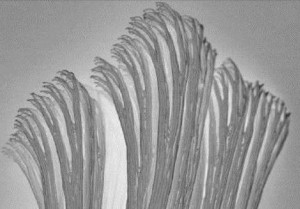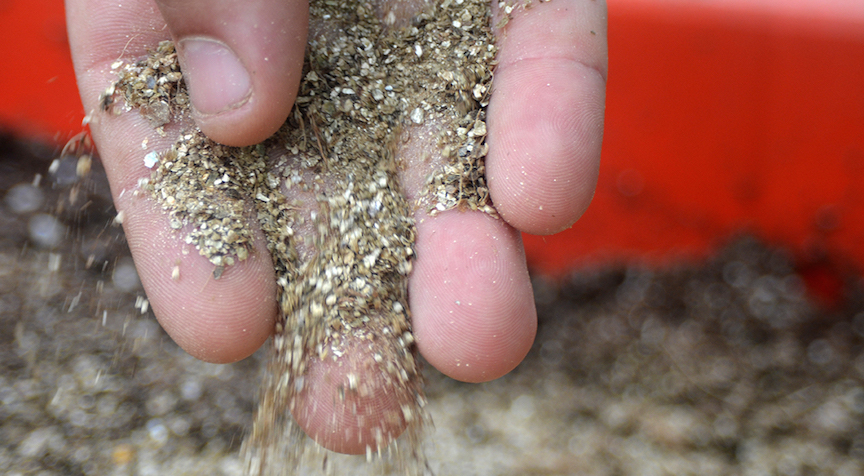We like to imagine that our distant Ice Age ancestors were hunterers by instinct, fearlessly navigating an unforgiving world, in the face of an extreme climate and unimaginable danger – nomads without a home, following only the stars and the herds through the brush. Whether it sounds romanticized or barbaric, the real picture could be very different, thanks to some new evidence brought to light by British archaeologists and published in Science this week.
While the diet of the average hunter-gatherer seems largely unpalatable today – living and dying in an age without most of the produce we take for granted, and which has also contributed to obesity epidemics, they didn’t always live off the land in the strictest sense of the term – actively trading with other tribes and even importing grains which they introduced to the British Isles from the European continent. In fact, if the ancient DNA discovered just below the British coast is any indication, it is likely that farming may have been happening in Great Britain 2,000 years earlier than what researchers once thought. Beneath the rocks of the windy coast lie the remains of what was once a prehistoric hunting camp.
“The work may be forcing archaeologists to confront the challenge of fitting this into our worldview,” said Dorian Fuller, an archaeobotanist at University College London who did not partake in the research. It may show that the evolution of agriculture was much more of a gradual and complex process than archaeologists had previously thought, affecting the transition of each adapting tribe in different ways.
For decades, the classic model held by archaeologists was that some of the earliest farmers traveled through the Middle East into Europe, first migrating some 10,500 years ago. Upon their arrival, they either began to replace or successfully converted these hunter-gatherer populations when they continued to move westward. They finally reached the British Isles somewhere around 6,000 years ago, around the time that Mesopotamia first discovered the properties of beer making. However, this worldview has undergone a number of modifications in the last several years. Back in 2013, some excavations of dwellings show that farmers and hunter-gatherers co-existed for a substantial period of time, during which they my have developed their own barter system for services, rather than everyone readily embracing the new concept of agriculture. A 2013 archaeological dig in Germany revealed that both farmers and hunter-gatherers shared a cave for burying their dead, a practice they continued for over 800 years, indicating that these groups often lived closely together on overlapping tracts of land. Another more controversial find, still not fully tested, is the claim that some hunter-gatherers living in the Baltic region of Europe 6,500 years ago may have actually eaten domesticated swine, which they were given by local farmers.
Rather than moving from east to west, this rash of new excavations could mean that these people traveled much more erratically and extensively than we once thought. Robin Allaby, a plant geneticist at the University of Warwick in the United Kingdom, led the expedition, initially in a search for evidence of the oldest domesticated plants in Great Britain, a land which was settled by people relatively later than the rest of Europe. On their travels, the researchers decided to explore an already known underwater site, the Bouldnor Cliff, about 820 feet off Britain’s southern coast in the English Channel.
Bouldnor Cliff, located 36 feet below the water’s surface, was first described as fossil rich in 1999, drawing the curiosity of researchers everywhere after the United Kingdom’s Maritime Archaeology Trust recalled, “a lobster seen throwing Stone Age worked flints from its burrow.” Archaeologists haven’t left it alone since. The hunter-gatherers who camped near the site, who we might think of as land dwellers, are suspected to have sailed wooden boats built from trees near the coast. Allaby’s team discovered some burnt hazelnut shells in the sediments, which radiocarbon dating and ancient DNA analysis revealed to be between 8,020 to 7,980 years ago, before the sea levels rose that separated Britain from France.
When comparing these DNA samples, the team was in for another pleasant surprise. They were able to isolate from the DNA samples two different kinds of domesticated wheat – one of which was of Middle Eastern origin, with no ancestors living in the wilderness of northern Europe. Therefore, the nomads who camped out on Bouldnor Cliff were somehow associated with the beginning of agriculture throughout the Middle East, which began some 10,500 years ago.
So did they farm their own wheat somewhere near the encampment? No traces of pollen were detected in further analyses, which would have implied that the plants were actually grown and underwent a flowering process in prehistoric Britain. They also ruled out any possibility that their sample was contaminated with modern grasses. If this is consistent with other findings, it is likely that farming may have begun as early as 7600 years ago, spreading to Britain from France.
However, there is the other possibility that hunter-gatherers from Britain may have gone deeper into the heart of Europe than researchers have proposed, and actually picked up products from farmers living eastward, which they then brought back to their camp. Allaby has agreed that the usage and frequency of grains in Britain at this time period is still disputable – it might have been seen as more of a rare commodity like exotic spices, than a staple of daily diets.
|
|
James Sullivan
James Sullivan is the assistant editor of Brain World Magazine and a contributor to Truth Is Cool and OMNI Reboot. He can usually be found on TVTropes or RationalWiki when not exploiting life and science stories for another blog article.
|













